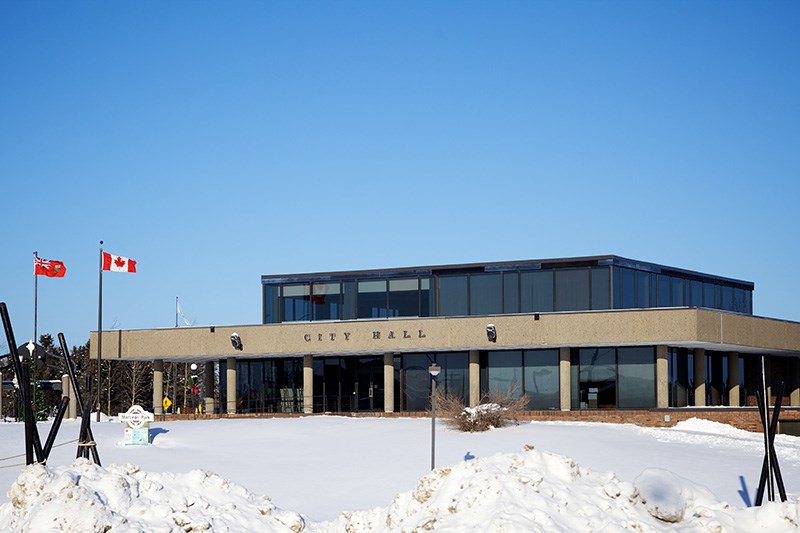At their Jan. 9 meeting, the City of Thompson’s development review committee discussed the potential health hazards associated with asbestos, particularly in renovating or demolishing older buildings, and how the city can maintain safety standards while managing new asbestos regulatory demands from the province.
There are many older buildings in Thompson that are primed for either renovation or demolition. The city says the province of Manitoba now requires reporting when any demolitions are being carried out to make sure there are no asbestos-containing materials. But the city is concerned about the increased regulatory burden.
“They wanted the City of Thompson to basically track this down and compile information to send to them,” city manager Anthony McInnis said. “Basically, every single permit that comes forward. I think we are resisting doing that because that’s a lot of bureaucracy they are putting on us to do for them.”
Instead, the city is proposing a waiver to maintain asbestos safety standards and minimize bureaucratic entanglements.
“If someone comes in to get a demolition permit, they have to complete the waiver,” McInnis explained. “The waiver says you must contact this person, in this provincial department. You’re responsible to do your asbestos test and submit it to them. They acknowledge that they understand this, and now it’s their issue.”
The city acknowledges the need for a system to manage asbestos risk.
“But I don’t think it’s the city’s responsibility to be tracking all this down and doing it for the province,” McInnis argued. “The other option is that every time someone comes for a permit, we would forward their name and all their details to the province.”
Outside of issues between city hall and the province, the historical use of asbestos should be a concern to all builders, contractors and weekend renovation warriors.
In 2018, the government of Canada introduced a total asbestos ban, “despite no significant health risks if materials containing asbestos in your home are tightly bound in products and are in good condition, sealed behind walls and floorboards, isolated in an attic, or left undisturbed.”
According to the Asbestos Network, a North American information resource for those affected by mesothelioma, a disease caused by asbestos exposure, asbestos was used in, “almost every public and commercial building constructed before the 1980s.” Asbestos was used in Canada into the 1990s. According to Health Canada, it can also cause asbestosis, a scarring of the lungs, and lung cancer.
The Asbestos Network states there were a multitude of construction applications for asbestos.
“As a fireproofing material, it was applied on steel beams and columns during construction of multistory buildings,” they say. “Because of its strength, asbestos was added to concrete, asphalt, vinyl materials in roof shingles, pipes, siding, wall board, floor tiles, joint compounds and adhesives. Its heat-resistant qualities made asbestos the perfect thermal insulation. The material was also used in acoustical plaster and as a component of a mixture sprayed on ceilings and walls. In short, it was the miracle material of the building industry.”
Health Canada states there are several ways of being exposed to asbestos.
“You can be exposed to asbestos when a home or building is being renovated or demolished,” they say. “Small asbestos fibres can be released into the air when disturbing or removing insulation that contains asbestos, including insulation around hot water pipes and tanks.”
Health Canada also says that removing or disturbing roofing shingles and felt or siding containing asbestos, sanding, breaking apart or scraping vinyl asbestos floor tiles can be a problem.
They say caution should be used when breaking apart soundproofing ceiling tiles containing asbestos, sanding or disturbing plaster containing asbestos, including acoustical plaster, sawing, drilling or smoothing rough edges of asbestos materials, or sanding or scraping old surface treatments containing asbestos, such as roofing compounds like tar paper, spackling, sealants, paint, putty, caulking, or drywall.
“Some car parts also contain asbestos,” explains Health Canada. “In some cases, you can be exposed to asbestos dust when changing your brakes or replacing a transmission clutch.”
Health Canada states the best way to avoid asbestos exposure is hiring an asbestos testing professional before renovating, remodeling, or demolishing.
The City of Thompson recommends contacting Manitoba Workplace Safety and Health at 204-726-6361, for any questions about proper detection, abatement, handling, and disposal of asbestos.




